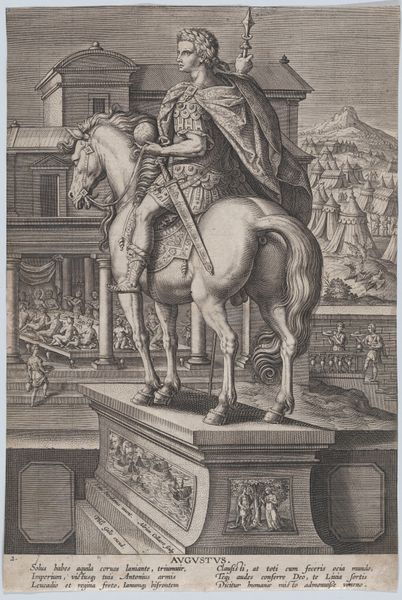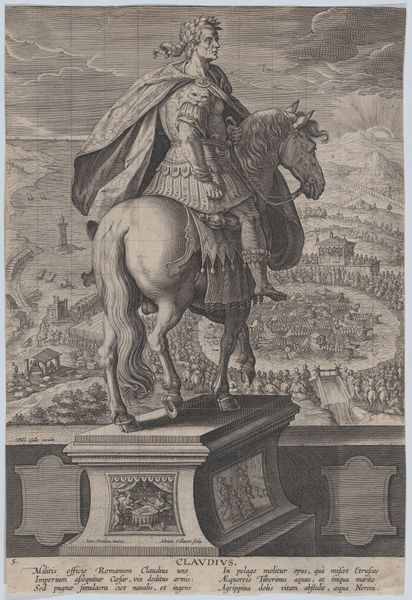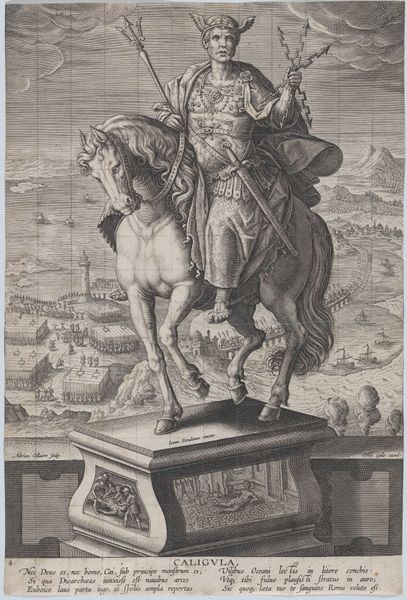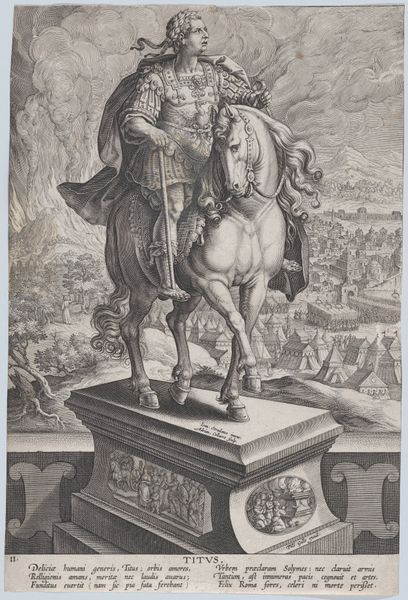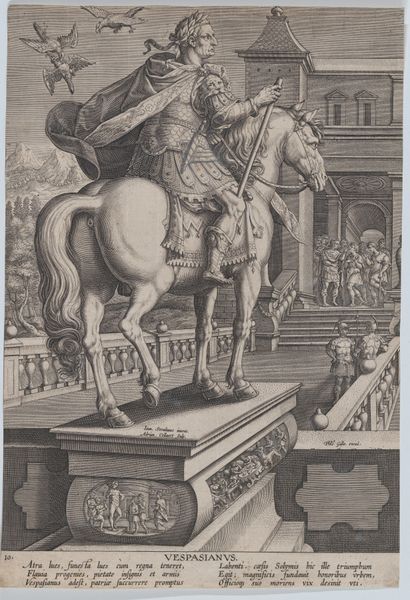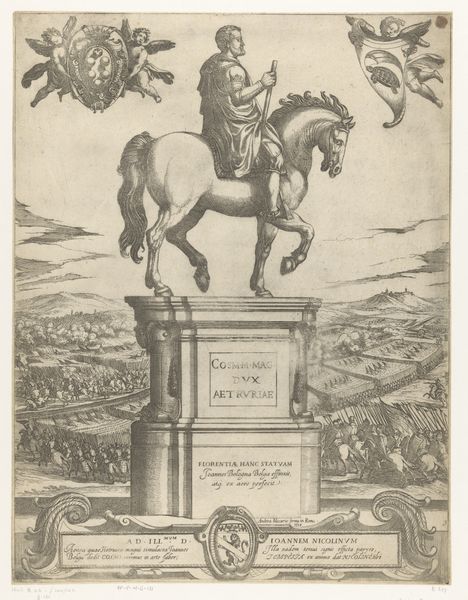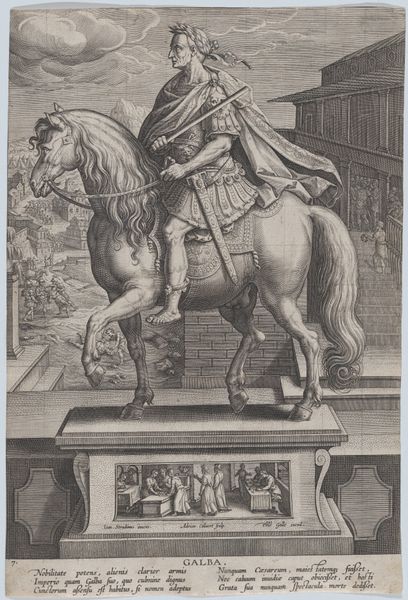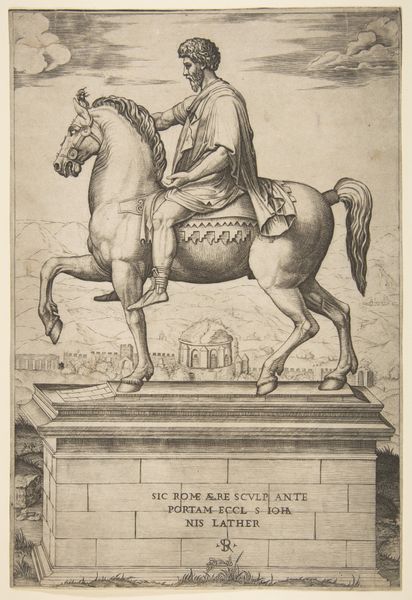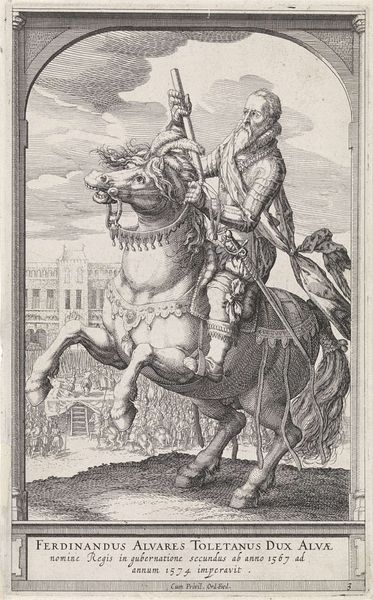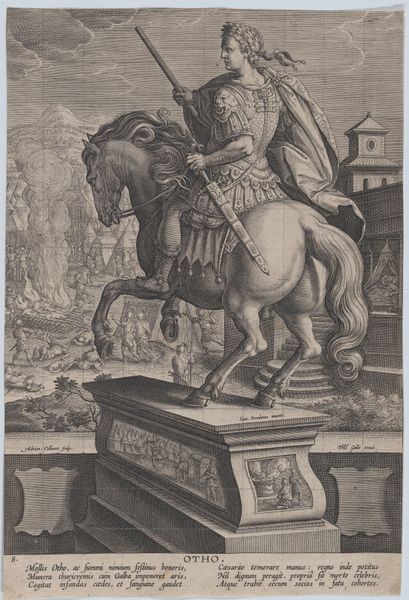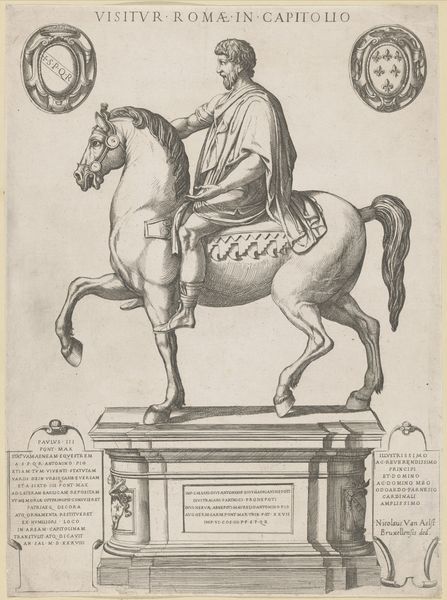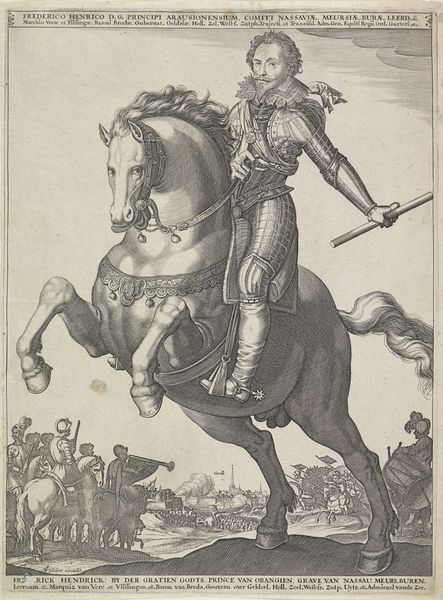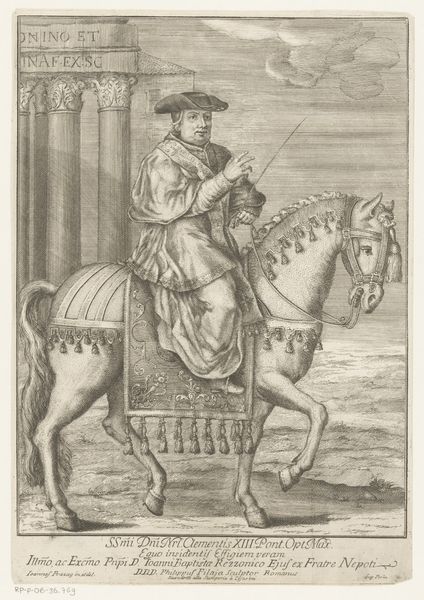
Plate 3: equestrian statue of Tiberius, in profile to the left, with a naval landscape on pedestal below, from 'Roman Emperors on Horseback' 1582 - 1594
0:00
0:00
drawing, print, etching, engraving
#
portrait
#
drawing
# print
#
etching
#
landscape
#
mannerism
#
figuration
#
11_renaissance
#
horse
#
men
#
portrait drawing
#
history-painting
#
engraving
Dimensions: Sheet (Trimmed): 12 15/16 × 8 9/16 in. (32.9 × 21.8 cm)
Copyright: Public Domain
Editor: This is Adriaen Collaert's engraving from around 1582-1594, titled "Plate 3: equestrian statue of Tiberius...". The detail is astonishing, isn't it? There’s something almost…staged about the whole composition. How would you interpret its significance? Curator: Staged is an astute observation. Consider how equestrian portraits served a vital socio-political function, especially during the Renaissance. They weren't merely representations, but powerful assertions of authority, echoing ancient Roman imperial imagery to legitimize contemporary rulers and institutions. What is particularly noteworthy is the naval scene depicted on the pedestal, it suggests a deliberate construction of Tiberius's image. Editor: So, you’re saying the image of Tiberius isn’t necessarily about *him* per se, but about using his image to convey power dynamics of the time the print was made? Curator: Precisely. And more than that, look at the broader context: prints like these circulated widely. They shaped public perception and participated in the politics of imagery. Notice the blend of historical reference with contemporary artistic style. This Mannerist approach reflects the complex cultural dialogue between the past and the present. Collaert is presenting us with not just Tiberius, but *an idea* of Tiberius tailored to the sensibilities of the late 16th century. Editor: That’s fascinating. I was so focused on the portrait itself, I hadn't considered the message being constructed for its audience. Curator: The production of prints also ties into broader issues of patronage and workshop collaborations in early modern Europe, shaping artistic careers and visual culture across geographical boundaries. The role of the printmaker like Collaert gains relevance in this light. Editor: I've definitely learned a new way to appreciate how historical context shapes not just the content but also the purpose of art. Thank you! Curator: Indeed. Understanding the context helps us see art as active participants in shaping social and political landscapes.
Comments
No comments
Be the first to comment and join the conversation on the ultimate creative platform.
